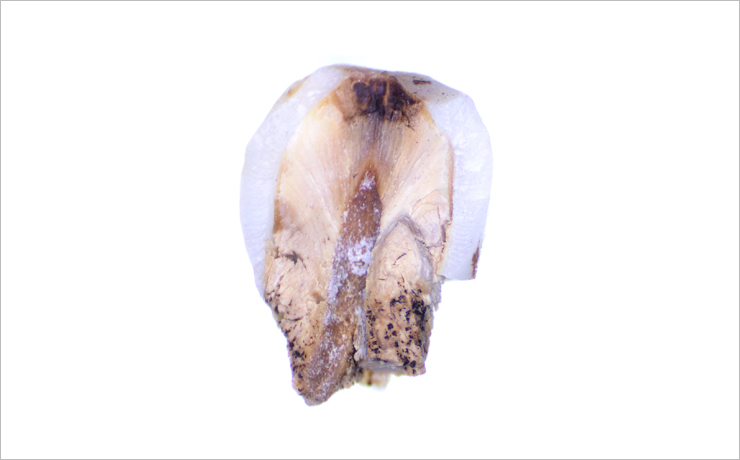Neutron methods for studying unique historical artifacts
News, 20 September 2021
Collaboration continues between the Group of Neutron Activation Analysis (GNAA) of the Frank Laboratory of Neutron Physics JINR and archeologists in studying the remains of the medieval Russian nobility.
This time, the researchers of the group aim to study bone materials and components of dental tissue from various burials, including Maria Borisovna (first wife of Ivan III) and Maria Temryukovna (second wife of Ivan IV the Terrible). The most interesting sample, however, is undoubtedly the bone remains of Tsar Ivan IV the Terrible, one of the most famous and controversial personalities in Russian history.
 Longitudinal section of Maria Temryukovna’s tooth
Longitudinal section of Maria Temryukovna’s tooth
First of all, the scientists of the group plan to determine the elemental composition of the remains using neutron methods: neutron activation analysis and prompt-gamma neutron activation analysis. Also, it is planned to carry out a number of additional experiments with the help of state-of-the-art instruments to study the molecular composition using Fourier-transform infrared spectroscopy, and to reveal visual features using optical microscopy in various light ranges. The obtained results will help to clarify the circumstances of the life and death of persons who went down in Russian history.
It should be noted that the specialists of GNAA have gained considerable experience in studying biological samples: in 2017, the hair of Anastasia Romanovna (first wife of Ivan IV the Terrible) and a fragment of the rib bone of Ivan the Terrible’s son, Ivan Ivanovich, were examined. A year later, organic matter from the skull and brain fragments of Elena Glinskaya (mother of Ivan IV the Terrible) were studied. The obtained results allowed archaeologists to make an assumption about the violent death of Anastasia Romanovna by poisoning with a mercury-based poison.